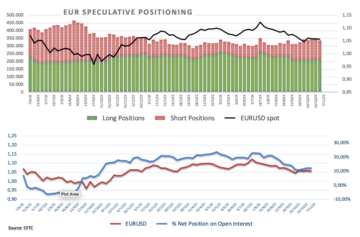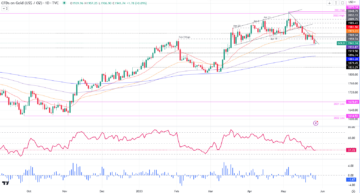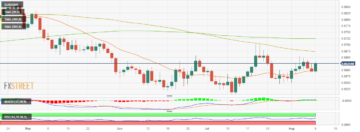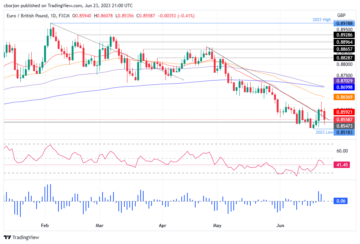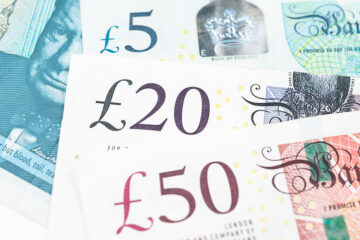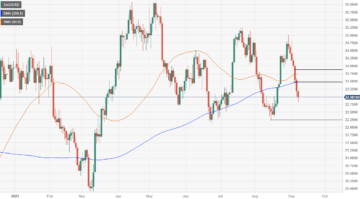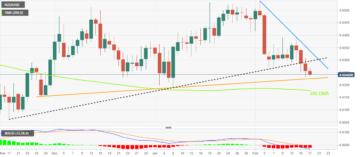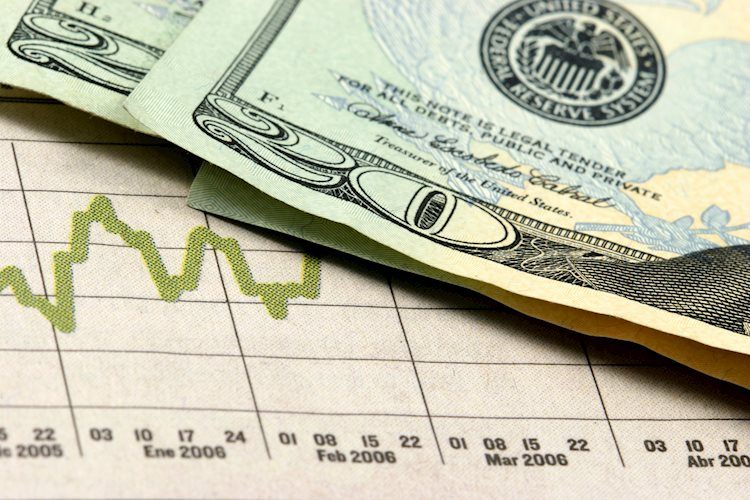
A busy week lies ahead with meetings from the Fed, ECB, and BoJ, as well as key data from the US on inflation and retail sales, and employment numbers from Australia and the UK. Central bank decisions and economic figures will pose a challenge for equity markets and the US Dollar.
Here is what you need to know for next week:
The US Dollar ended the week under pressure, particularly against emerging and commodity currencies, after unexpected rate hikes from the Reserve Bank of Australia and the Bank of Canada, higher commodity prices, and an improvement in market sentiment. Decisions from the RBA and BoC boosted government bond yields across the globe.
Wall Street indexes reached their highest level in months, despite some concerns about the global economic outlook. Expectations of a less hawkish Fed contributed to the improvement in market sentiment. US yields ended the week moderately higher, supported mostly by expectations of another rate hike but not in June.
Next week will be critical, and volatility is expected on the back of critical events, including central bank meetings and key data. Among those relevant numbers will be the US Consumer Prices Index (CPI) on Tuesday, the day before Fed’s decision. The CPI is expected to show an increase of 0.3% in May and a 4.2% increase from a year earlier, down from 4.9%. The annual Core CPI is expected to rise from 5.5% to 5.6%. On Wednesday, the Producer Price Index is due.
If the US consumer inflation numbers come in line with expectations, markets will probably fully price in no change from the Fed. With the Fed funds rate at 5.00%-5.25%, it is above inflation. The odds of another hike rose after the Nonfarm Payroll report and were also boosted by the surprise from the Reserve Bank of Australia and the Bank of Canada. However, the spike in Initial Jobless Claims on Thursday offered another argument for those who want to hit the pause button. The forward guidance from the Fed and the forecasts will be watched closely. Later in the week, the US will report Retail Sales.
EUR/USD rose after four weeks, but the upside was capped by the 20-week Simple Moving Average (SMA) and under the 1.0800 area, boosted by a weaker US Dollar. Next Thursday, the European Central Bank (ECB) will announce its decision on monetary policy. A 25 basis point rate hike is expected. The question in the market is what might happen after the June meeting.
Analysts at TD Securities affirmed:
There is little doubt that the ECB will deliver another 25bps hike at the June meeting, bringing the deposit rate to 3.50%. While the majority of Governing Council members appears to agree that a 3.75% terminal rate is the minimum for this tightening cycle, forward guidance is likely to remain non-committal.
The Pound outperformed during the week as markets see the Bank of England going further with rate hikes. The next BoE meeting is on June 22. The UK will release employment data next week. GBP/USD posted its highest daily close in a month above 1.2500, and the bias is towards more gains. EUR/GBP dropped below 0.8550 to levels not seen since August 2020.
The Bank of Japan will have its June meeting next week. No change is expected, but some are warning about an announcement regarding Yield Curve Control (or signals about a change in July). The Yen was affected by higher government bond yields during the week. However, the USD/JPY continues to move sideways offset by a weaker Dollar. The pair was unable to hold above 140.00, while it continues to be supported above 138.50.
Analyst at Well Fargo comments on BoJ:
We expect the Bank of Japan’s policy adjustment to be a further step toward normalizing Japan’s government bond market. Specifically, we expect the BoJ to lift the target for the 10-year Japanese government bond yield to 0.25% from 0% and widen the tolerance band around that target to +/- 75 bps. Should this adjustment proceed smoothly, we would view it as a probable precursor to the BoJ fully ending yield curve control, perhaps sometime in 2024.
The Australian Dollar outperformed following the unexpected RBA rate hike. Next week, Australia will release employment data. AUD/USD posted its second week of gains, rising above the 20-week SMA and also retaking 0.6700. The outlook has improved for the Aussie.
NZD/USD extended its rebound from monthly lows and climbed above 0.6100. The AUD/NZD soared to 1.1000, reaching its highest level since January. New Zealand will report Q1 GDP growth next Thursday.
The Loonie rose against the US Dollar but lagged behind commodity currencies amid lower crude oil prices and a weak Canadian employment report on Friday. The rate hike from the BoC took markets off guard and boosted the Canadian Dollar. USD/CAD posted its lowest weekly close in a month but the Loonie failed to break the crucial support area around 1.3300.
The Colombian Peso and the South African Rand were the biggest gainers of the week, supported by the improvement in market sentiment. The biggest decliner was the Turkish Lira after Erdogan’s victory and despite his efforts to limit the devaluation by naming market-friendly policymakers. USD/TRY rose more than 10% during the week, reaching record highs above 23.50; just a month ago, it was trading at 19.40.
Like this article? Help us with some feedback by answering this survey:
- SEO Powered Content & PR Distribution. Get Amplified Today.
- EVM Finance. Unified Interface for Decentralized Finance. Access Here.
- Quantum Media Group. IR/PR Amplified. Access Here.
- PlatoAiStream. Web3 Data Intelligence. Knowledge Amplified. Access Here.
- Source: https://www.fxstreet.com/news/forex-today-dollar-in-trouble-fed-unlikely-to-rescue-202306091846
- :has
- :is
- :not
- 1
- 10
- 11
- 2%
- 2020
- 2024
- 22
- 23
- 25
- 40
- 50
- 7
- 75
- a
- About
- above
- across
- Adjustment
- African
- After
- against
- ago
- ahead
- also
- Amid
- among
- an
- and
- Announce
- Announcement
- annual
- Another
- ARE
- AREA
- argument
- around
- article
- AS
- At
- AUGUST
- aussie
- Australia
- Australian
- Australian dollar
- average
- back
- BAND
- Bank
- bank of canada
- Bank of England
- bank of japan
- basis
- basis point
- BE
- before
- behind
- below
- bias
- Biggest
- BoC
- BoE
- boj
- bond
- bond market
- Bond yields
- Boosted
- Break
- Bringing
- busy
- but
- button
- by
- Canada
- Canadian
- Canadian Dollar
- Canadian employment report
- central
- Central Bank
- challenge
- change
- claims
- Climbed
- Close
- closely
- come
- comments
- commodity
- commodity prices
- Concerns
- consumer
- continues
- contributed
- control
- Core
- Council
- council members
- CPI
- critical
- crucial
- crude
- Crude oil
- currencies
- curve
- cycle
- daily
- data
- day
- decision
- decisions
- deliver
- deposit
- Despite
- Devaluation
- Dollar
- doubt
- down
- dropped
- due
- during
- Earlier
- ECB
- Economic
- efforts
- emerging
- employment
- England
- equity
- Equity Markets
- Erdogan
- European
- European Central Bank
- events
- expect
- expectations
- expected
- Failed
- Fed
- fed funds rate
- feedback
- Figures
- following
- For
- forecasts
- forex
- Forward
- four
- Friday
- from
- fully
- funds
- further
- Gainers
- Gains
- GDP
- gdp growth
- Global
- Global Economic
- globe
- going
- governing
- Government
- Growth
- Guard
- guidance
- happen
- Have
- Hawkish
- help
- higher
- highest
- Highs
- Hike
- Hikes
- his
- Hit
- hold
- However
- HTTPS
- improved
- improvement
- in
- Including
- Increase
- index
- indexes
- inflation
- initial
- IT
- ITS
- January
- Japan
- Japanese
- jobless claims
- jpg
- July
- june
- just
- Key
- Know
- later
- less
- Level
- levels
- lies
- likely
- LIMIT
- Line
- lira
- little
- lower
- lowest
- Lows
- Majority
- Market
- market sentiment
- Markets
- May..
- meeting
- meetings
- Members
- might
- minimum
- Monetary
- Monetary Policy
- Month
- monthly
- months
- more
- mostly
- move
- moving
- moving average
- naming
- Need
- New
- New Zealand
- next
- next week
- no
- Nonfarm
- numbers
- Odds
- of
- off
- offered
- offset
- Oil
- on
- or
- Outlook
- pair
- particularly
- pause
- Payroll
- perhaps
- plato
- Plato Data Intelligence
- PlatoData
- Point
- policy
- policymakers
- posted
- pound
- precursor
- pressure
- price
- Prices
- probably
- producer
- Q1
- question
- Rate
- Rate Hike
- rate hikes
- RBA
- RBA rate
- reached
- reaching
- rebound
- record
- regarding
- release
- relevant
- remain
- report
- rescue
- Reserve
- reserve bank
- reserve bank of australia
- retail
- Retail Sales
- Rise
- rising
- ROSE
- s
- sales
- Second
- Securities
- see
- seen
- sentiment
- should
- show
- sideways
- signals
- Simple
- since
- SMA
- smoothly
- soared
- some
- specifically
- spike
- Step
- street
- support
- Supported
- surprise
- Survey
- Target
- TD
- TD Securities
- Terminal
- than
- that
- The
- the Fed
- the UK
- their
- this
- those
- thursday
- tightening
- to
- today
- tolerance
- took
- toward
- towards
- Trading
- trouble
- Tuesday
- Turkish
- Turkish Lira
- Uk
- unable
- under
- Unexpected
- unlikely
- Upside
- us
- US Dollar
- US yields
- victory
- View
- want
- warning
- was
- we
- Wednesday
- week
- weekly
- Weeks
- WELL
- were
- What
- while
- WHO
- will
- with
- would
- year
- Yen
- Yield
- yield curve
- yield curve control
- yields
- you
- Zealand
- zephyrnet

